Spring and early summer are when many of us start thinking about our yards, landscaping and freshening things up outside. However, there’s more to a healthy home than just a well-watered lawn. Making key exterior maintenance decisions now can prevent bigger problems later.
In this article, we share some of the most effective ways to prevent water damage to your home. These are best practices we follow in our clients’ properties, and we’re sharing these tips to help any homeowner protect their home’s structure, health and value for the long haul. Whether you’re planning a new build or just tackling a summerrefresh, these simple steps can make a lasting impact.
Keep Water Moving to Prevent Water Damage
Start by checking that gutters and downspouts direct water away from the home. As you inspect the gutters’ health, make sure to repair any broken downspouts immediately so water doesn’t pool around the foundation. You’ll also want to double-check that the ground slopes away from your home so water drains naturally toward the street. One final thing to always remember is to avoid placing landscaping or structures where they could block water flow.
According to the EPA’s Indoor airPLUS program, downspouts should extend at least five feet from the home to prevent soil saturation, which can lead to foundation issues. Meeting the building code isn’t always enough. Your drainage system’s slope and placement matter as much as the distance.
In his article “Draining Gutter Runoff,” professional builder Byon Papa notes that many builders run downspouts into buried four-inch pipes that exit five feet from the home. However, runoff may still return to the foundation if the ground slopes back toward the house.
Where possible, drains should be pitched to promote flow, ideally at 1/8 inch per foot. This can be challenging on flat properties, and sites like that need extra care to ensure effective drainage. Landscapers should avoid obstructing natural drainage patterns. But don’t forget about the exit strategy. Drainage exits should be thoughtfully located to prevent water from pooling or damaging nearby areas.
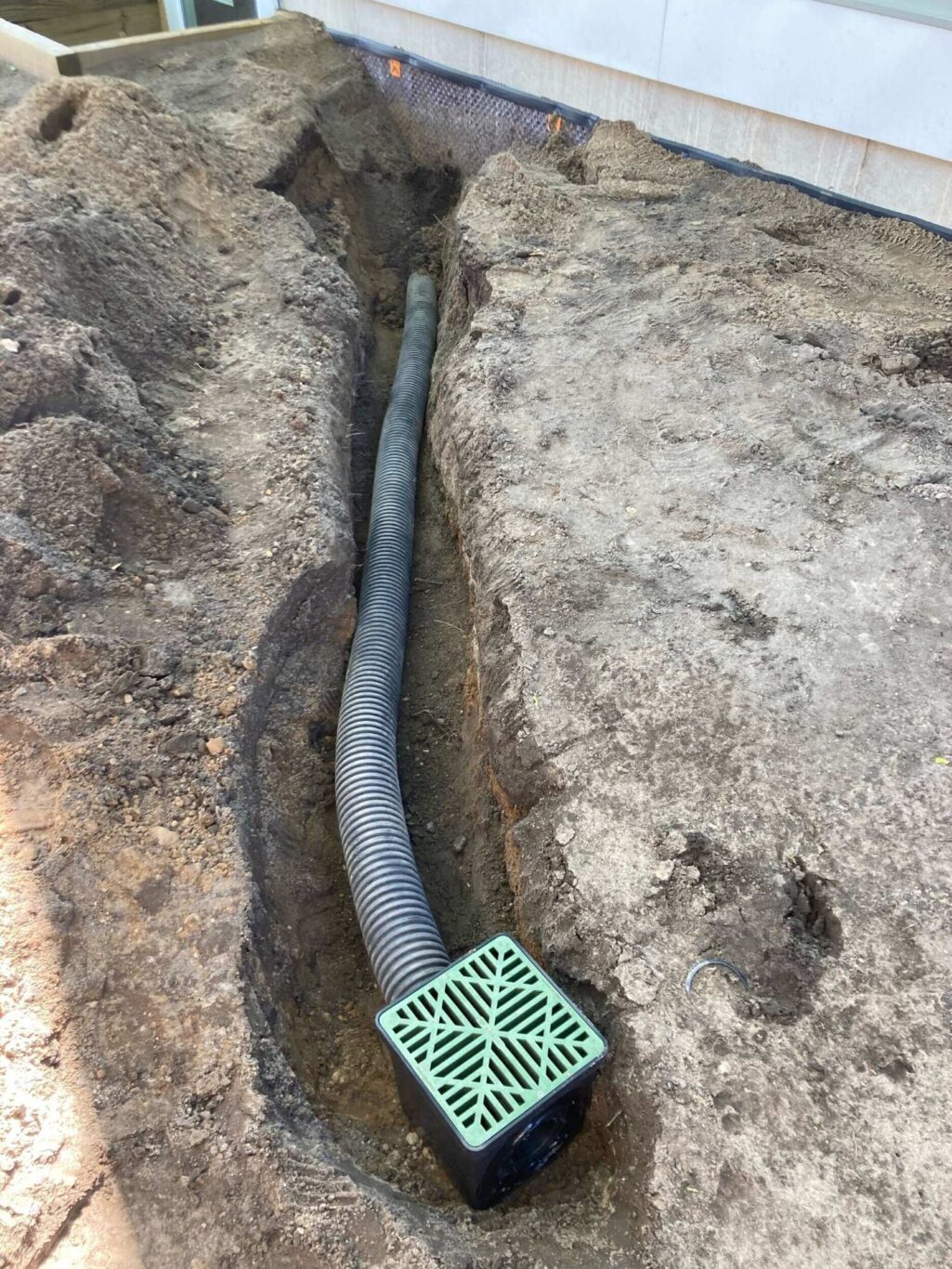
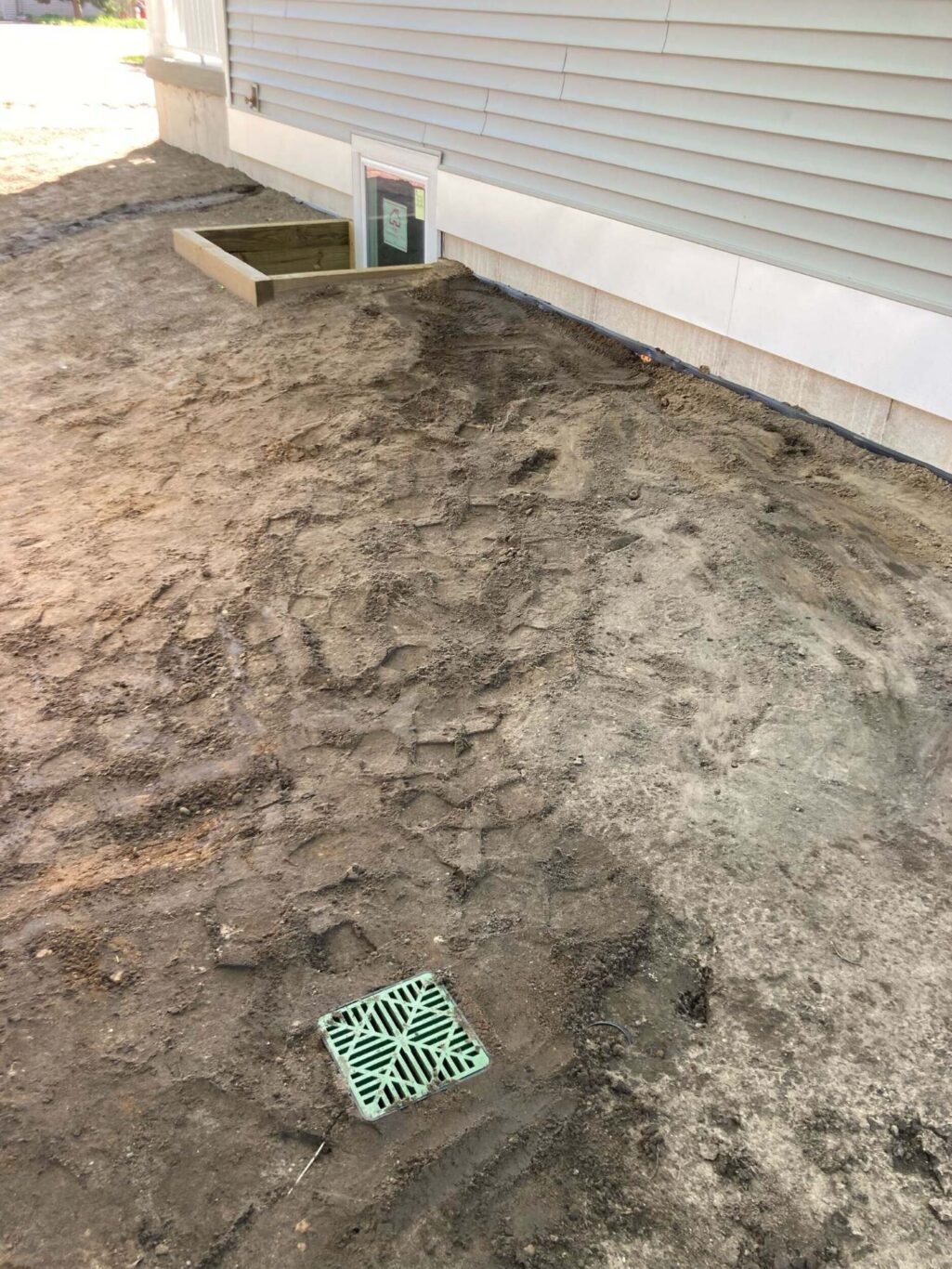
The image above shows a complete installation that slopes away from the house (the ground, that is) to guide water toward the drain, connecting to the city’s storm sewer (clarifying note: the drain pipe itself heads back toward the house, but only because it is connecting to a stormwater system) . This solution is especially useful for city properties where limited space due to nearby neighbors poses challenges for effective site drainage.
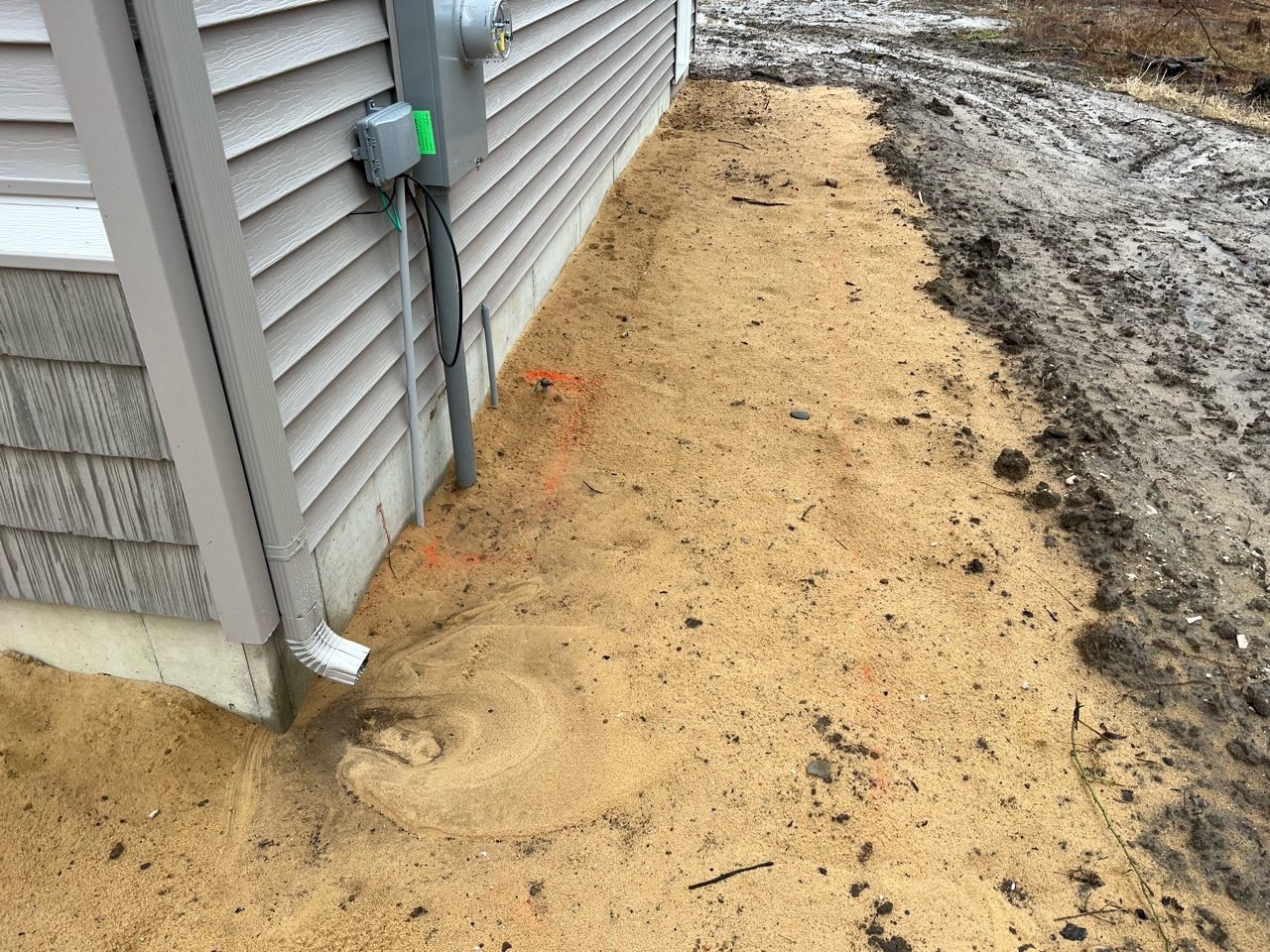
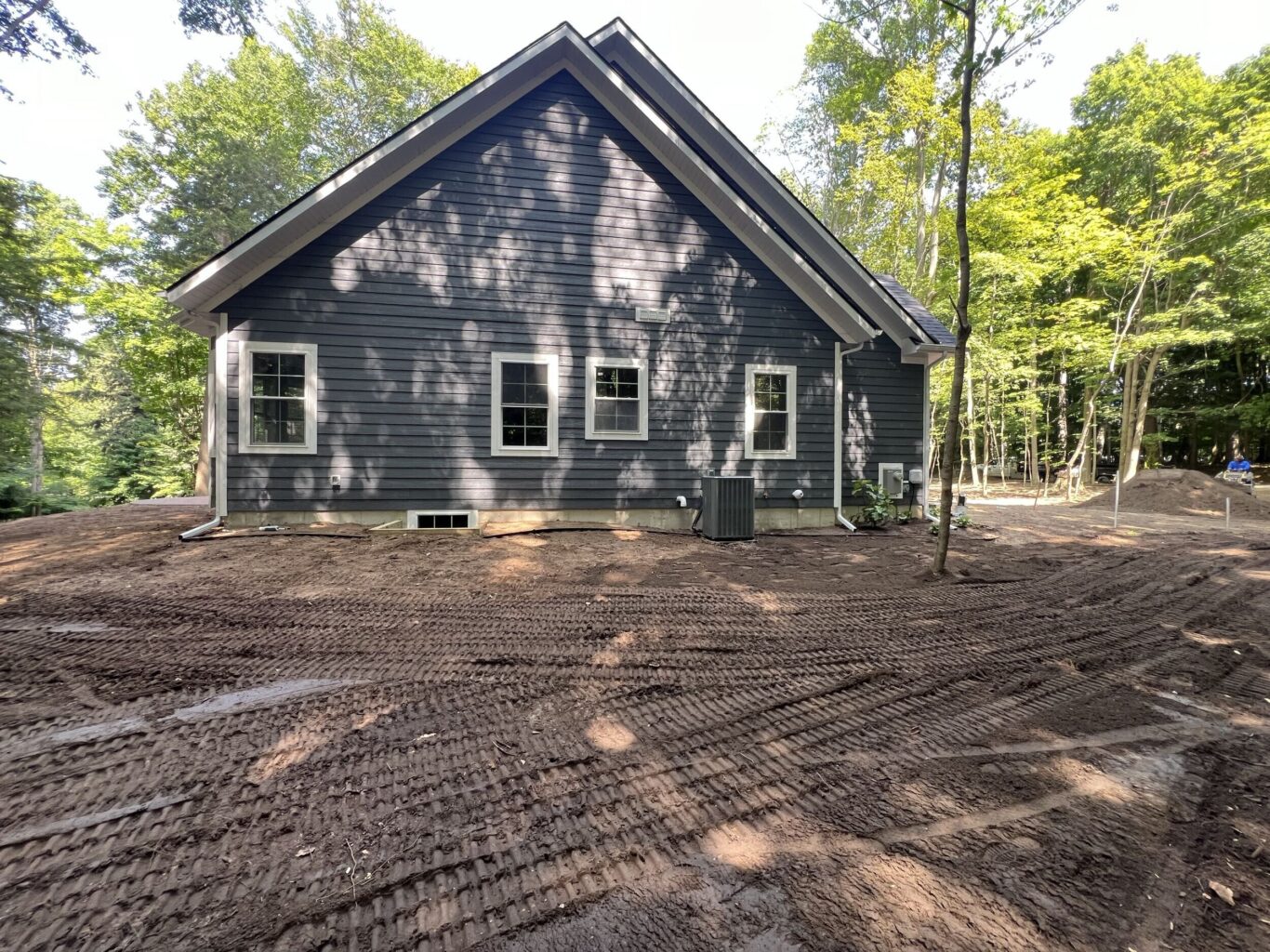
Add Stone Strips to Manage Water Flow
You don’t always have to use catch basins or subsurface piping to handle water flow. Surface techniques, like swales or stone strips, slow water naturally and allow it to absorb into the soil. Best of all, these systems cost less to install and require less maintenance over time.
Older homeowners often prefer stone strips for their durability and low upkeep. They prevent erosion and help manage drainage without needing buried systems or constant monitoring.
The article “Grading and Drainage Principles” explains that gravel paths mimic natural runoff and reduce the need for seasonal maintenance. Although catch basins and piping may be necessary on some sites, this research encourages homeowners to choose simple systems over complex ones to promote effortless water infiltration.

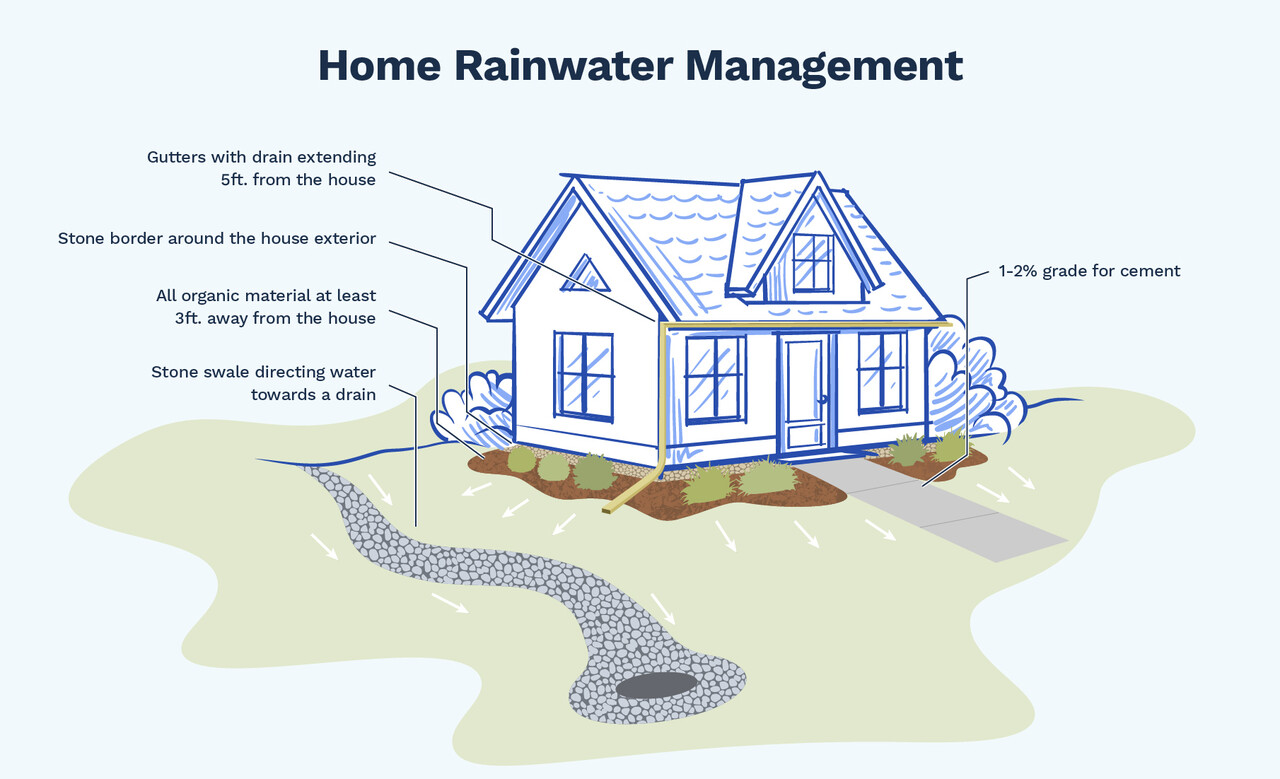
Patio & Walkway Grading
When envisioning your ideal hosting pad, patio and lawn designs should include gentle slopes to avoid pooling and standing water. A great article “Grading and Drainage Principles,” suggests that patio and lawn areas should have no more than a 2% slope to manage surface flow without erosion or pooling. The research also advises directing flow away from high-use zones while keeping water movement gentle and predictable. Considering that, choose a surface drainage system that will direct water toward low-impact zones, like planted swales or natural slope lines.
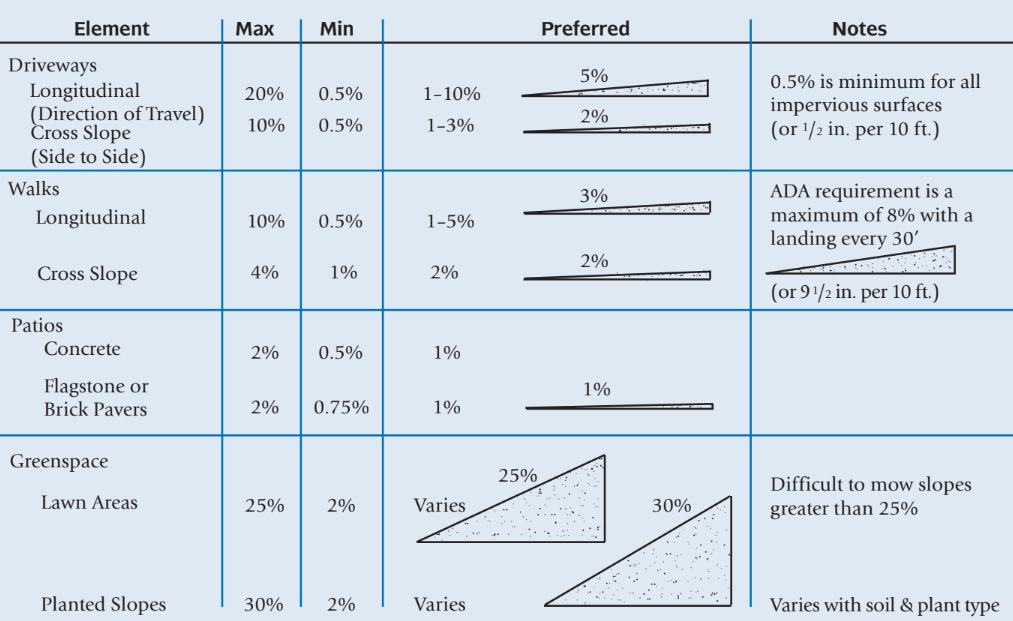
To ensure a great space for your family and guests, we always want to avoid draining runoff into high-use areas like patios or walkways. Maintaining proper slope keeps these zones dry, clean and safe for daily use. The design prioritizes both function and aesthetic purposes. It also reduces water stress near the foundation to help prevent slip hazards in common outdoor areas.

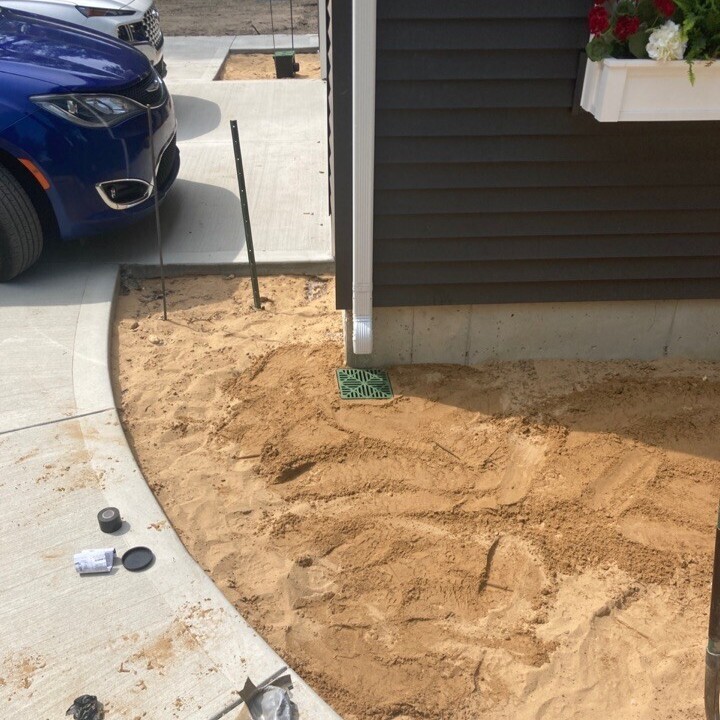
Keeping Water Out Also Keeps Pests Out
Pests love moisture, cover and clutter. Keeping the area around your home clean, dry and clear is one of the easiest ways to avoid an infestation of these unwanted guests.
Here’s what we recommend for preventing pests:
- Keep bushes and trees at least 3 feet away from your home.
- Avoid storing trash, firewood or clutter near exterior walls.
- These provide food and shelter for bugs and rodents.
- Instead of lining your home with mulch and flowers all the way up to the foundation, install a two-foot-wide gravel strip around it.
- Make it at least four inches deep and slope away from the house at about 5% (½ inch per foot) to keep the area dry.
- Seal any cracks or openings where pipes and wires enter the home.
- Use durable materials like stainless steel mesh, as pests can chew through weaker ones.
- In termite-prone areas, consider termite shields and pest-resistant insulation.
- Most importantly, keep things dry. Water attracts pests. Fix leaks, clean gutters and avoid overwatering your yard.

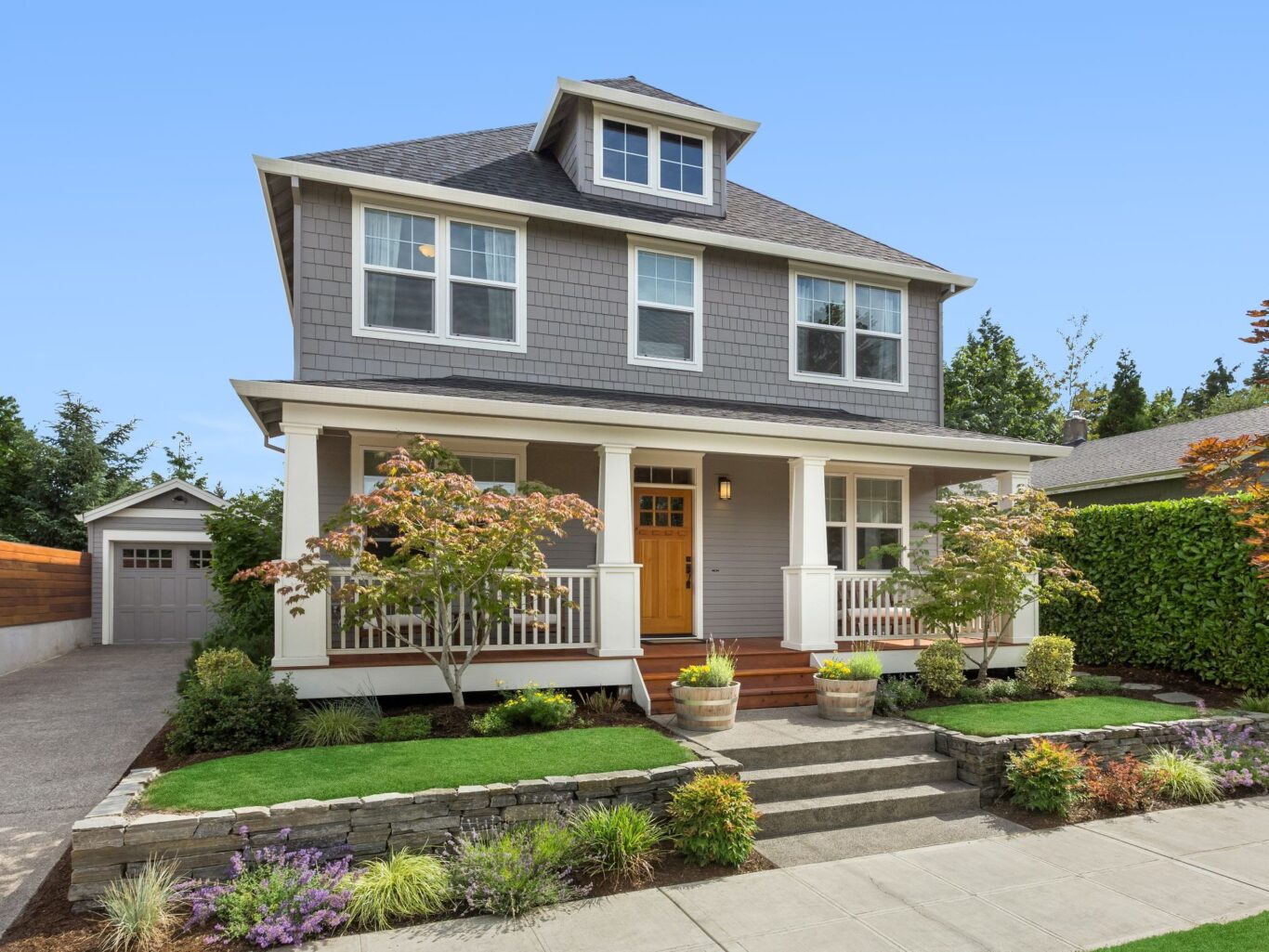
Tree-Safe Tips for Summer Landscaping
We’ve spent a lot of time discussing how to prevent water damage by keeping water away from your home, but it’s worth noting that landscaping activities like changing grades, redirecting water or installing downspouts—might impact trees or large plants around your home.
Whenever possible, it’s ideal to preserve the existing grade around trees and landscaped areas. Changing the grade under trees can damage their root zones and reduce the tree’s ability to access air and water, ultimately shortening its life. Homeowners should also avoid compacting the soil under tree canopies, as it restricts airflow and water absorption.
According to “Grading and Drainage Principles,” compacting soil or altering grades under existing trees often leads to early decline. The article’s research recommends preserving the natural grade and drainage, which can help trees thrive well beyond initial construction. The research also shares that excess irrigation or drainage near tree roots can be equally as damaging as too little. When it comes to draining water, make sure to drain water away from trees to avoid overwatering zones around the extent of the tree’s crown. Major changes to the water flow of these areas disrupts the balance and can damage root systems. For homeowners with mature trees, this step helps maintain long-term landscape health.
Protecting the Health of Your Home
Summer is the perfect time to make sure your outdoor spaces are prepped with best practices in mind and ready for the long haul. The steps we shared here are simple but effective: manage water flow, keep landscaping in check, and create an environment pests don’t want to call home. These practices prevent water damage to your home, improve indoor air quality, and preserve the long-term value of your property. Whether you need property advice or an exterior update, we’re here to help your home stand strong for the test of time.
Reach out today to discuss your summer project.
Articles: